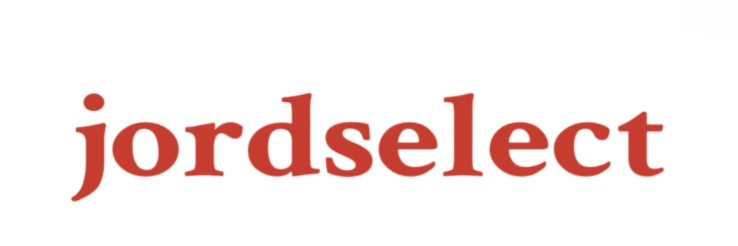Explosive Atmosphere Lighting: LED vs. Traditional Solutions Explained
In industries where explosive atmospheres are a daily reality—think oil rigs, chemical plants, and grain storage facilities—the choice of lighting solutions is critical. The right lighting not only enhances visibility but also plays a pivotal role in ensuring safety and compliance with stringent regulations. Traditional lighting options have long been the go-to for these environments. However, the rise of LED technology presents a game-changing alternative. This blog will delve into the advantages of LED lighting for explosive atmospheres compared to traditional solutions, outlining key factors that any facility manager or safety officer should consider.
Understanding Explosive Atmospheres
Before delving into the comparison between LED and traditional lighting, it’s essential to grasp what defines an explosive atmosphere. According to ATEX guidelines and the National Fire Protection Association (NFPA) standards, an explosive atmosphere arises when flammable substances, such as gases, vapors, or dust, exist in sufficient quantities to create a hazardous condition. Working safely in these environments necessitates specialized equipment, including lighting that can endure flammable conditions without causing sparks or explosions.
The Case for LED Lighting
LED technology has rapidly gained popularity across various industries, and its benefits are especially significant in volatile environments. Here are several reasons why LED is preferable to traditional lighting:
1. Superior Energy Efficiency
LEDs are renowned for their energy efficiency, converting over 80% of electrical energy into light, unlike traditional incandescent bulbs which only utilize about 20%. This efficiency not only cuts energy costs but also reduces heat output—a critical safety consideration in explosive settings. Lower heat production lessens the risk of igniting flammable gases or vapors that may be present.
2. Longevity and Reliability
LEDs offer remarkable durability, typically lasting 50,000 hours or more, which dwarfs the lifespan of traditional bulbs, such as incandescent or fluorescent lights, which generally last around 1,000 to 15,000 hours. This extended lifespan translates into lower maintenance costs and fewer replacements, which helps minimize downtime. In sectors where time is of the essence, this benefit can be transformative.
3. Improved Safety Features
In explosive atmospheres, safety is non-negotiable, and LEDs are equipped with features that enhance their safety profile. Many LED fixtures are designed to be explosion-proof or flameproof, adhering to rigorous international standards. Moreover, LED lights can often be customized to meet specific needs within zoning classifications (like Zone 1 or Zone 2), providing additional security against potential hazards.
4. Better Light Quality
Recent advancements have enabled LED lights to deliver exceptional light quality, offering various color temperature options that enhance visibility and reduce eye strain. This flexibility allows for safer and more efficient task performance, whether for detailed inspections or general illumination. The ability to tailor lighting can boost productivity and overall workplace safety.
5. Eco-Friendly Considerations
Lighting choices can significantly influence environmental sustainability, alongside meeting regulatory requirements and managing costs. Generally, LED lights do not contain hazardous materials such as mercury, often found in fluorescent bulbs, and they are completely recyclable. With the growing emphasis on eco-friendly practices across industries, implementing LED technology aligns with sustainability goals while remaining compliant with environmental regulations.
The Drawbacks of Traditional Lighting
Although traditional lighting solutions like high-intensity discharge (HID) or fluorescent lamps are occasionally used, they have notable disadvantages in explosive atmospheres:
1. Higher Heat Emission
Traditional bulbs emit significant heat, elevating the risk of ignition in environments where volatile substances exist. The threat associated with high-heat fixtures makes them less suitable for hazardous locations.
2. Frequent Maintenance
With shorter lifespans, traditional fixtures require more regular maintenance and replacement. This increases operational costs and involves unsafe downtime while crews address lighting issues, presenting a layer of risk management that can be easily avoided with LEDs.
3. Dimming and Performance Issues
Many traditional lighting options lack effective dimming capabilities, resulting in performance issues during low-light conditions or in transitional areas. This can be dangerous, especially in situations that necessitate precise visibility.
Conclusion
In conclusion, selecting the right lighting for explosive atmospheres isn’t merely about regulatory compliance; it’s essential for ensuring a safe and efficient workplace. LED technology clearly emerges as the superior choice, offering energy efficiency, longevity, enhanced safety features, exceptional light quality, and environmental sustainability. While traditional lighting solutions have fulfilled their roles in the past, the innovations introduced by LEDs position them as the ideal fit for today’s demanding industrial landscapes. Investing in LED lighting not only protects workers but also paves the way for organizations towards a more sustainable and profitable future. When making your next lighting choice, focus on securing both performance and protection—select solutions that illuminate in a safe and responsible manner.
The company is the world’s best explosive atmosphere lighting, ex proof lighting, flameproof push button supplier. We are your one-stop shop for all needs. Our staff are highly-specialized and will help you find the product you need.


Comments